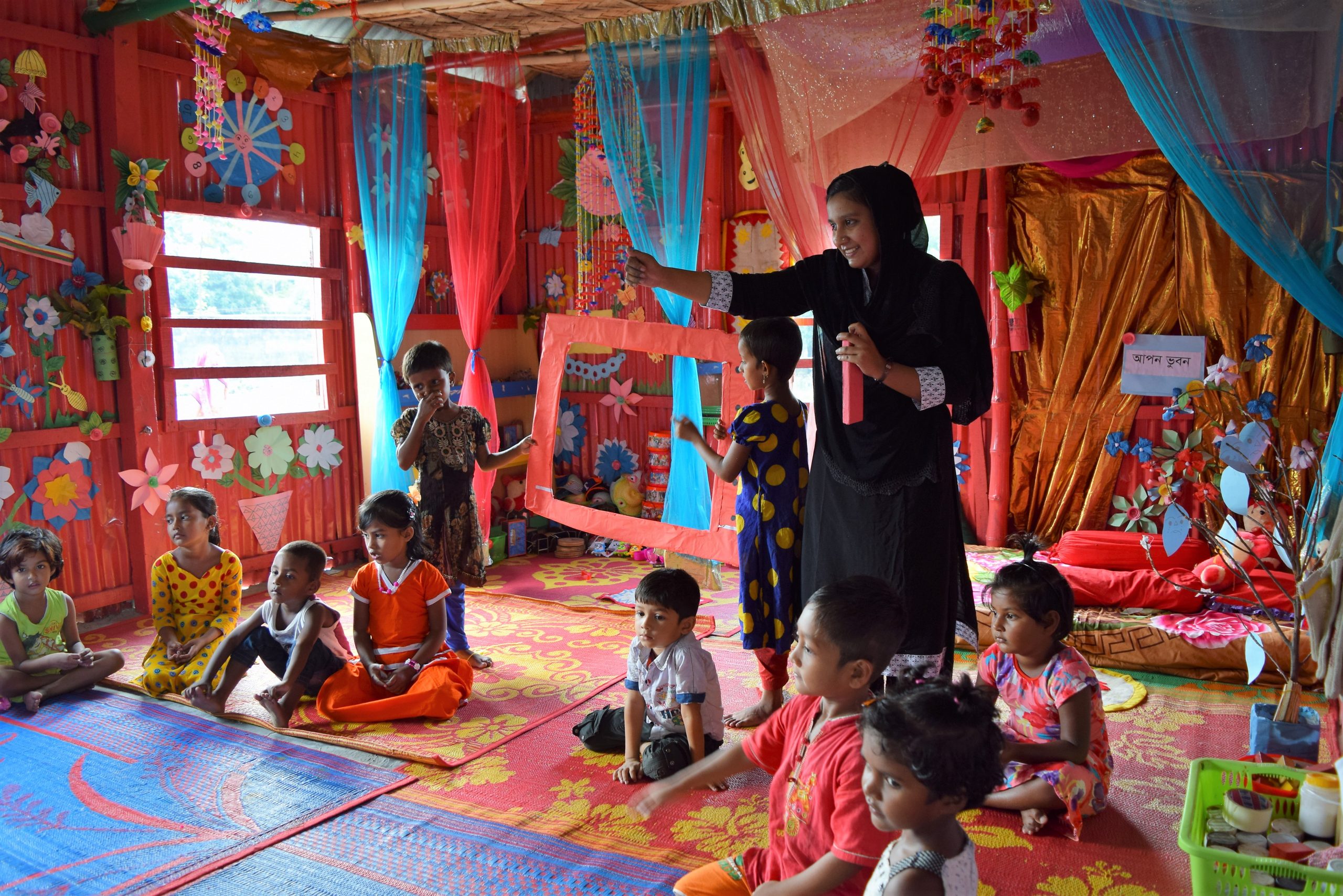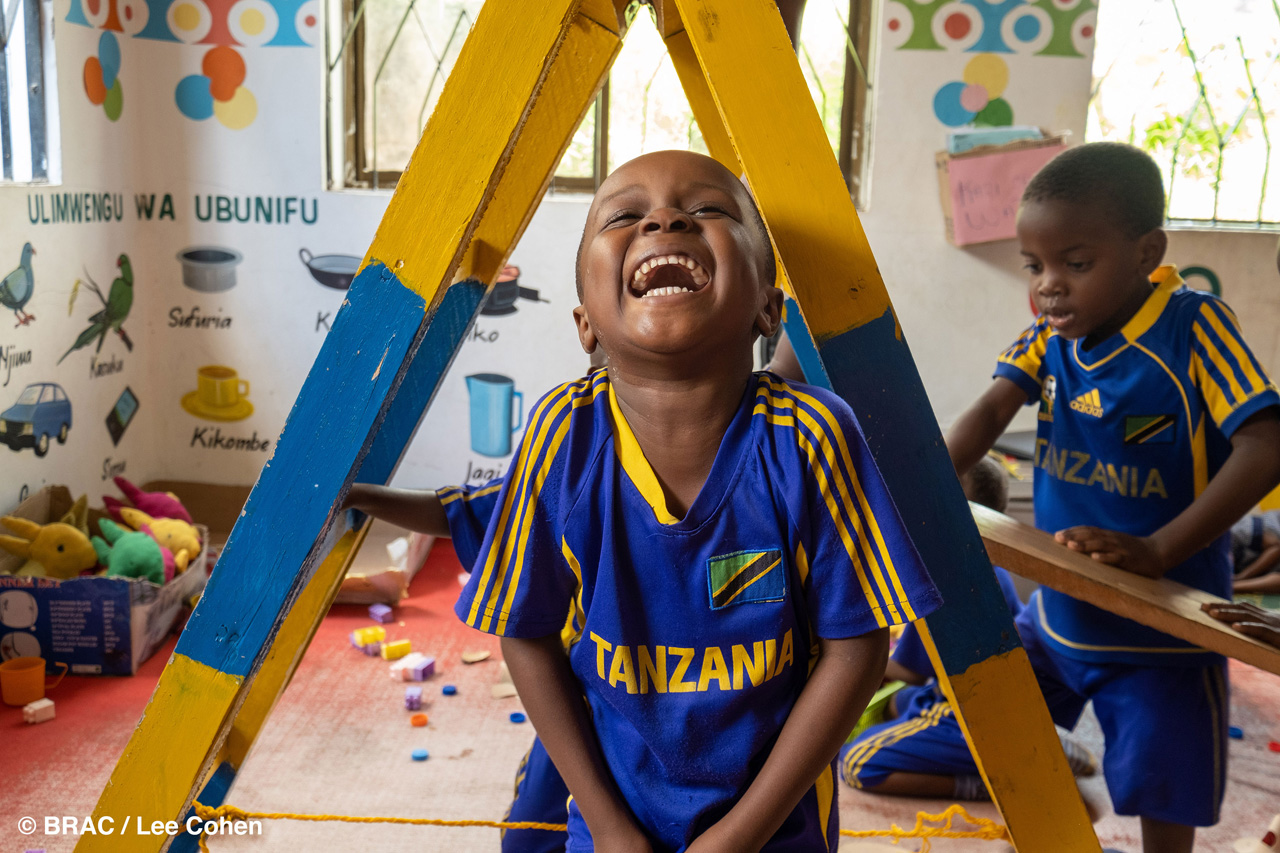Learning in a pandemic: 4 tips for parents and caregivers with young children at home
Reading Time: 3 minutes
As more than a billion students around the world put their schooling on pause, families are doing more than ever to bring learning home.
According to UNESCO, more than 90 percent of the world’s learners have been impacted by school closures during the coronavirus pandemic. As more than a billion children around the world are forced to put their schooling on pause, parents and caregivers are left in challenging situations, often balancing work with child care or home schooling to keep their children from falling behind.
Since 2016, BRAC Play Labs have offered quality, affordable play-based learning for children, ages three to five, in underserved communities. Play Labs deliver education through a community-based model and engage caregivers in their children’s learning beyond the classroom. Here are four tips from our Play Labs to help your family bring playful learning home.

1. Create spaces that facilitate learning
Learning environments are a crucial factor in learning. Play Labs are designed to encourage play and facilitate learning, incorporating child-friendly elements such as windows that are low to the ground and zones for different types of play, such as make-believe, music, art, and reading.
While this works for Play Labs, caregivers who are bringing learning home do not need to designate a separate room or special furniture for learning. Instead, consider creating learning spaces from regular home settings, such as a corner of a common room or an outdoor space. Try identifying areas that can be used for different purposes, such as a table for arts and crafts or a corner with floor space for play with toys. Creativity and imagination help create safe and engaging learning environments.

2. Use everyday items as low-cost learning materials
Play Labs are unique for their low-cost and sustainable learning materials. Parents and caregivers meet on a quarterly basis to decorate learning spaces and create contextually appropriate toys with locally sourced materials. For example, families in East Africa use banana leaves to create dolls, jump ropes, and balls, and in Bangladesh, families use clay to create produce for a make-believe market.
For young children transitioning to at-home learning, everyday items can be engaging play materials. Household staples like flour; dry rice, beans, or pasta; and shaving cream can be used for sensory play. Kitchen items such as pots and pans, utensils, and plastic containers can become musical instruments or building blocks and facilitate pretend play. Outdoor objects like rocks, leaves, or flowers can be used for art, science, or counting and sorting.

3. Harness play for learning and resilience
Emerging research indicates that play can promote resilience and establish a sense of normalcy for children in crisis settings. To support children, Play Labs favor playful and participatory activities over rote learning, and caregivers are encouraged to play with their children at home to support social, cognitive, and language development.
While many children have had their routines interrupted, play can help them build a new sense of normalcy. Rather than focusing on teacher or parent-led activities, caregivers can incorporate spontaneous, voluntary activities at home. Block out time for free play and follow your child’s lead. You can also incorporate playful learning into everyday activities. For example, use cooking or baking to explore numeracy skills, or practice colours and sorting while doing laundry.

4. Prioritise your mental wellbeing
A caregiver’s mental wellbeing can have a big impact on their child. In Cox’s Bazar, Bangladesh, where we have adapted our Play Lab model to support children affected by the Rohingya humanitarian crisis, psychosocial support is integral. BRAC trains teachers to recognise signs of psychological distress in both children and caregivers. When necessary, the teachers refer family members for specialised support.
With major shifts in child care, employment, health, and daily life, many caregivers are facing exceptional stress. It’s important to learn to recognise and respond to stress and anxiety in our children, but also in ourselves. Mitigating your own stress using common approaches like meditation, exercise, and journaling can help you better support your child. If you need additional support, consider options like tele-counselling. This is a challenging, destabilising time, but virtual resources are more accessible than ever.
As COVID-19 continues to impact the families we serve, BRAC is committed to protecting and engaging children and caregivers. We have paused in-person learning to ensure participant safety, and are working to adapt our education services and launch remote resources to support learning at home. Our priority is to ensure children and families keep healthy, stay connected, and continue learning throughout the pandemic.
Learn how you can support families affected by the COVID-19 crisis.
Sarah Allen is a Communications Officer, Mia Perez is a Programme Associate for Education and Youth, and Rosa Taylor is a Programme Officer for Education at BRAC USA.





